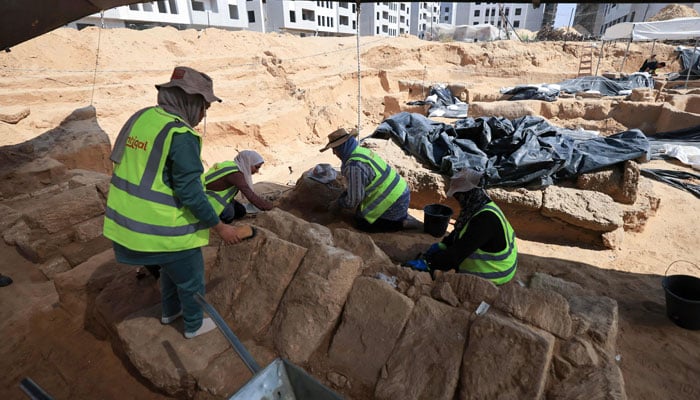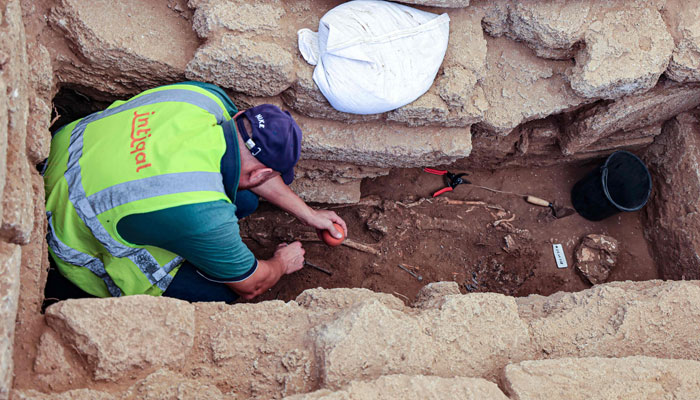
Palestinian workers recently discovered ancient graves, including two lead-made sarcophagi — stone coffins — in a Roman-era cemetery in the Israeli-occupied Gaza Strip, dating back 2,000 years, which seems to be the largest discovered in Gaza.
They made the rare discovery during the construction of an Egyptian-funded housing project near Jabaliya with the support of French experts in the excavation of the 2,700-square-metre site.
What was once a plain building site surrounded by a cluster of unremarkable apartment buildings is now a treasure trove for archaeologists trying to learn more about the Gaza Strip.
Gaza, a coastal enclave with a population of 2.3 million, has a rich history due to its location on ancient trade routes between Egypt and the Levant.
However, factors like Israeli occupation, Hamas’ 16-year takeover, and rapid urban growth pose threats to its archaeological treasures.
Against this backdrop, the discovery of 60 graves at the site marked a major finding, archaeologists say. That number has swelled to 135, according to TRT World.
Rene Elter, an archaeologist leading the dig, said researchers have studied over 100 of the graves.
“All of these tombs have almost already been excavated and have revealed a huge amount of information about the cultural material and also about the state of health of the population and the pathologies from which this population may have suffered,” said Elter, the head of archaeology for ”Intiqal.”
Intiqal is a programme managed by the French nonprofit Première Urgence Internationale.

Elter noted that the sarcophagi made of lead — one featuring ornate grape leaves, the other with images of dolphins — are exceptional finds.
“The discovery of lead sarcophagi here is a first for Gaza,” he said.
Palestinian archaeologists like Fadel Al Otul believe that given the rarity of the lead tombs, societal leaders may be buried there as he asserted that the cemetery was most likely formerly part of a city because Roman cemeteries were frequently found close to urban centres.
Elter’s team also unearthed skeletons and shards of clay jars, alongside the sarcophagi, that are being restored and pieced together.
According to Al Otul, the skeletons discovered at the site will be sent out of Gaza for additional analysis. The remains are set to return to the Hamas-led Ministry of Antiquities and Tourism.
Elter urged the need for a dedicated team to oversee archaeological activity in Gaza.
“The Gazans deserve to tell their stories,” he said. “Gaza boasts a plethora of potential archaeological sites, but monitoring each one, given the rapid pace of development, is no small feat.”

